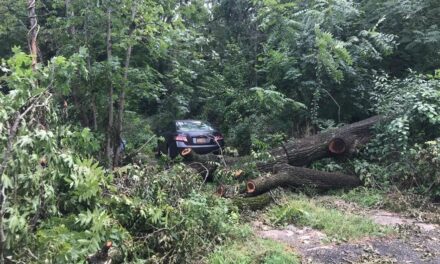The following was published on Long Island Business New’s Young Island on 3/27/13:
Long Island needs County-level government. Why? Because no other level of government is as good at long term planning as the Counties are. Not even New York State, or our local townships or villages can compete with the County’s planning efforts.
A recentJoye Browne column in Newsday has advocated for the substantive shrinking of County government. While I see the merit of the argument, I disagree with the notion that the 21stcentury doesn’t need County-level municipal services. Suffolk County, and their Department of Planning, when given the resources to be truly effective, has the ability to set in motion policies that are used as models for other municipalities across the Country. Yes, we need to streamline services, but it is County government who single-handedly gives us substantive and fruitful planning efforts. Here’s why.
As you drive east on the Long Island Expressway past Exit 63, a subtle change occurs. The HOV lane ends, the streetlights disappear, and the highway widens ever so slightly. The development patterns begin to shift, becoming decidedly more rural. This is what planners call the rural-urban fringe, or as normal people say, the beginning of the “middle of nowhere”.
On Long Island, the rural-urban fringe leads to some interesting and complex land use and community issues. These areas are under intense pressure to develop, change and adapt. The Town of Brookhaven is the beginning of the more rural townships that make up the Island’s East End, the frontier for Long Island’s last large remaining significantly sized parcels and open spaces. In these townships, the population density (measure of the amount of people per square mile) is barely 1/4th of those found within areas of Nassau County. Most importantly, these eastern areas, these “middle-of-nowhere tracts”, contain an economic powerhouse: Long Island’s farms.
Farming is big business, especially on the East End. In fact, over 90% of Long Island’s booming farm community can be found within Suffolk County. In total, Long Island’s farm sales amounted to $258.7 million, and each farm acre generated $7,249 in agricultural sales on Long Island, according to the NYS Comptroller’s Office. Our farm acreage is worth more than ten times the state average. Fun fact (for us policy wonks anyway…) Suffolk County is the New York State’s largest producer of pumpkins, cauliflower and tomatoes and is the third-largest producer of grapes, peaches and strawberries. While we are known for our shopping malls and, well, who knows what else, our farms are a force to be reckoned with.
Farming today is a substantive economic generator for the region, but it is important to remember that the industry has had some local government help in some unexpected ways. During the 1960’s through the 1980’s, Nassau and Suffolk were the fastest growing counties in the nation, and massive tracts of farmland were quickly becoming subdivisions. Growth was occurring so rapidly that in 1972, the LIRPB estimated that Long Island’s farms would be gone by 1985. Upon release of the LIRPB study, then-Suffolk County Executive John Klein made farmland protection the centerpiece (and ensuing legacy) of his administration. The program created was revolutionary, and was one of many that set a national precedent for other growing suburbs like us across the Country.
The County developed the first-ever Purchase of Development Rights (PDR) program. It works as follows: The County buys the right to develop or build on existing, undeveloped agricultural lands, rather than the entire “fee-simple”. In essence, the County is buying one right out of the many the land owner has. This distinction allows the farmers to maintain ownership and use of their property, while restricting their ability to build on the site. The innovative idea came from William Talmage, whose family has been on Long Island since the pre-Revolutionary War days. The program was, and still is, voluntary, with the intent of protecting farming as a “historic and cultural activity”. Since inception, over 6,000 acres of farmland have been preserved thanks to the Suffolk County Farmland PDR program, and there have been some conflictsas to how the program should grow and adapt to today’s world.
The work of farmland preservation is far from finished. Farming properties are under constant and consistent pressure to develop, especially in the County’s western townships. In fact, Newsdayrecentlywrote on the latest farm to retail conversion that is in the works for a 43-acre apple orchid near Manor Road and Jericho Turnpike in the Dix Hills/Elwood area within the Town of Huntington. The site proposal calls for roughly 400,000 square feet of retail and office spaces. While I will not get into the nuanced reasons why I am skeptical of the proposal, long-story short, it is disconcerting to see another farm, especially so far west, convert to yet another glorified strip mall.
We, as a region, need to ensure that the County continues its important work of protecting our farmland via the PDR program, especially in Western Suffolk, and like the County’s Drinking Water Protection Program, we need to ensure that this viable and significant program is given the resources it needs to continue its important work.
Overall, farming is a critical piece of our regional history, and a critical component of our future prosperity. Today, the role of County government is often debated thanks to the budgetary and economic conditions in both Mineola and Hauppauge. We need to collectively remember that thanks to the long-term thinking of Suffolk County, all of Long Island enjoys the fruits (pun fully intended) of their farmland preservation efforts. Historically, Suffolk County has employed some of the most innovative and long-term policies that have resonated across village, local and state lines. Let’s make sure that despite petty politics and squabbling, that the important work of protecting, preserving and nurturing growth on Long Island continues for the long-term.











